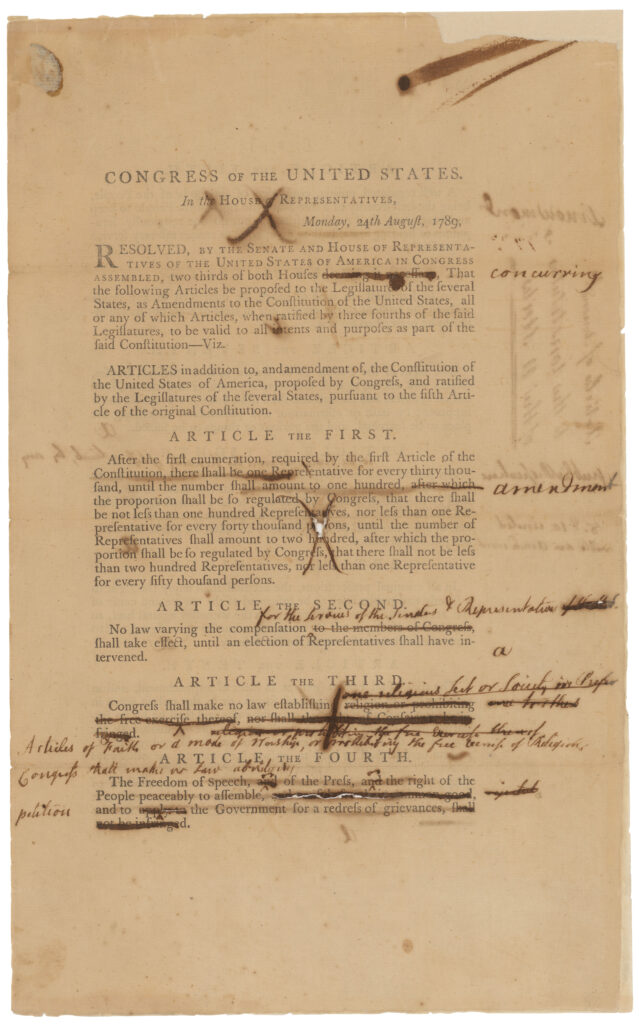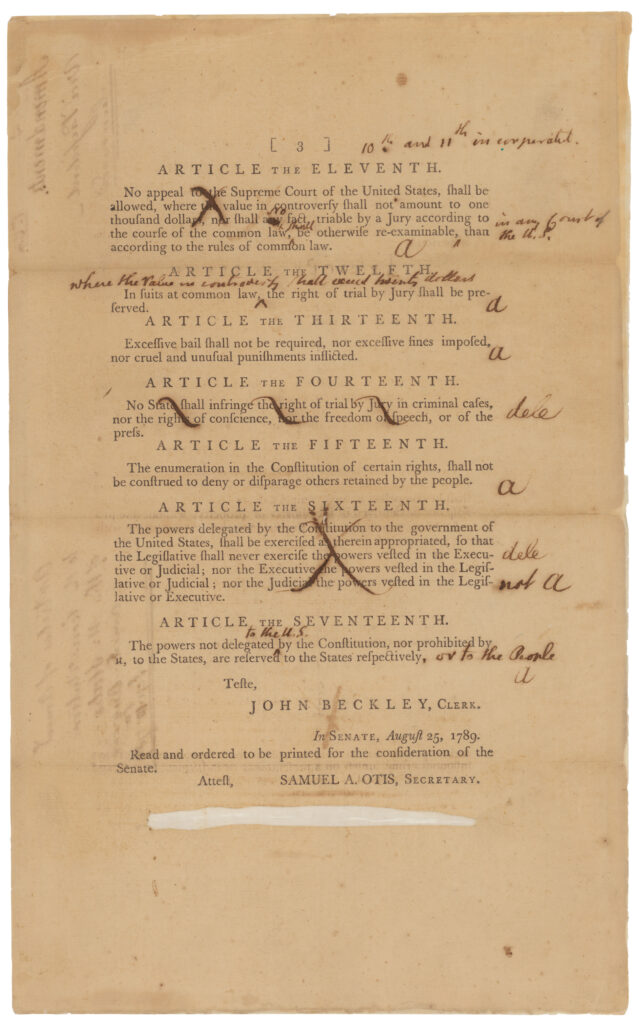On June 8, 1789, Representative James Madison of Virginia introduced a series of proposed amendments to the newly ratified U.S. Constitution. Though initially against the idea of an enumerated list of individual rights, fearing that they would be redundant and possibly limit the rights of individuals to those expressly listed, Madison had become convinced the year before that a promised ‘Bill of Rights’ was necessary to convince the states to ratify the Constitution.
That summer, the House of Representatives debated Madison’s proposal, and on August 24, the House passed 17 amendments to be added to the Constitution. The 17 amendments were then printed and sent to the Senate for their consideration.
From September 2 to September 9, the debate continued in the Senate, where the amendments were further revised and recast. This document shows many of the Senate’s handwritten changes to the House-passed articles of amendments. After further debate and additional votes, Congress passed 12 amendments that were sent to the states for approval. Ten of the amendments were ratified by the required three-fourths of the states and became part of the Constitution in 1791. These first 10 amendments to the U.S. Constitution are known as the Bill of Rights.
The two amendments that were passed by both the House and the Senate, but not ratified by the states both deal with Congress itself. The first amendment proposed to the states would have mandated that there be one representative for every 30,000 citizens in a state. The second proposed amendment made it impossible for the current Congress to raise its own pay; they could only raise the pay for the next Congress. This amendment was eventually ratified by the states in 1992, and became what we know as the 27th Amendment to the Constitution.



This document was on display in the “Featured Documents” exhibit in the Rotunda Galleries of the National Archives in Washington, DC, August 12 through September 10, 2014.
The National Archives Museum’s “Featured Documents” exhibit is made possible in part by the Foundation for the National Archives through the generous support of Toyota.
Download a high-resolution version of this document from the National Archives’ Online Public Access Database.
Click here to read all 27 ratified amendments to the Constitution.




